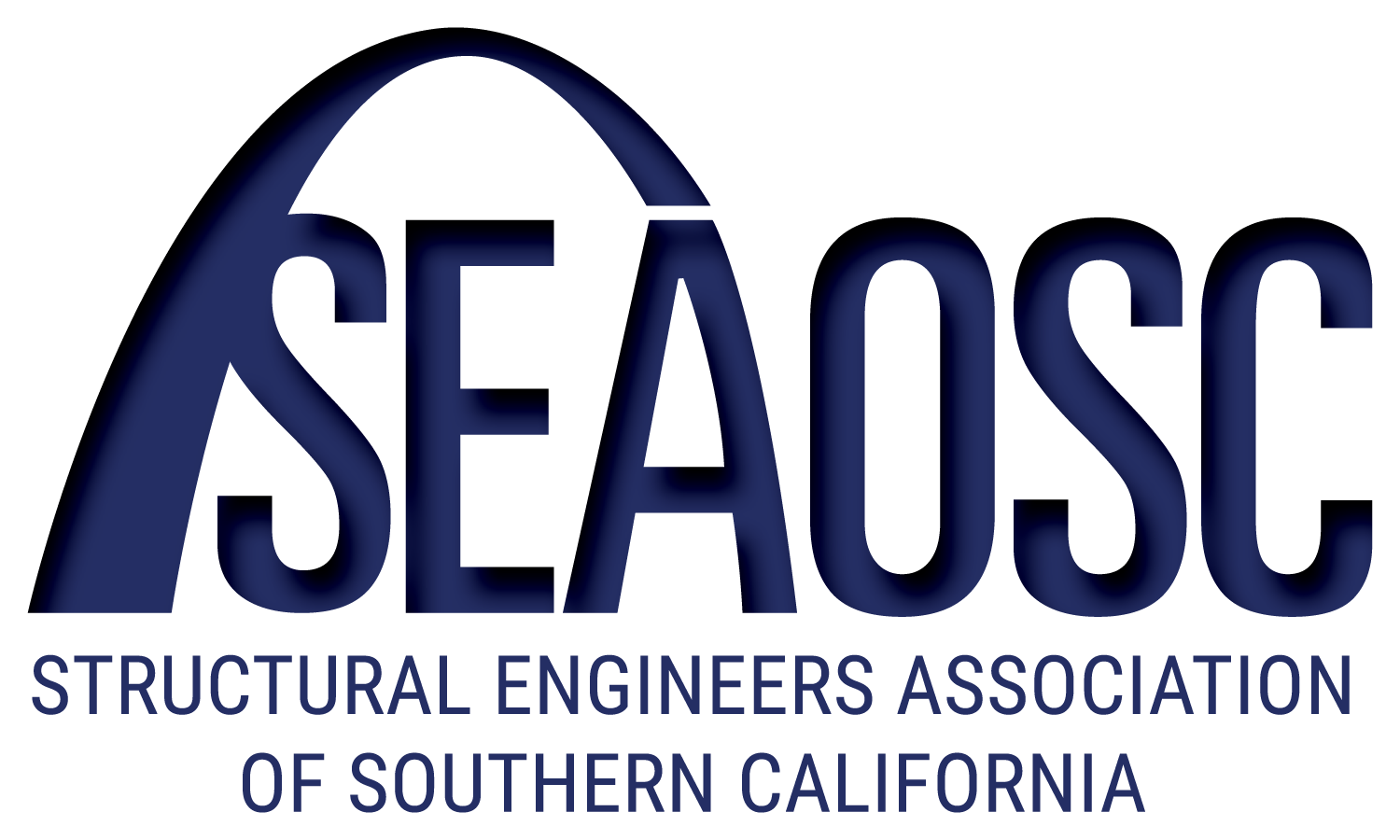- Structural Engineers/ing
- Safer Cities Initiative
- Find an Engineer
- News
- Events
- Media & Press
- About SEAOSC
Who We Are
Membership
SEAOSC Foundation
- Contact Us
|
What is an Earthquake?An earthquake is the release of stress from the Earth's tectonic plates. The zone where two tectonic plates come together is called a fault. Prior to an earthquake, tectonic forces result in a gradual buildup of strain energy stored on either side of the fault. When the local stresses along the fault become too large, the fault slips suddenly or ruptures and releases the stored strain energy. This rupture on the fault plane is called the focus and the projection of this point on the ground surface is called the epicenter. When a rupture occurs along a fault, the strain energy stored on either side of the fault is released in the form of seismic waves and heat. These seismic waves propagate away from the ruptured fault zone and through the geologic layers of rock and soil. The process of seismic wave propagation causes the ground to shake. |
What Types of Earthquakes are there?
The most common form earthquake is a shallow event where two tectonic plates slide past one another. Deeper earthquakes usually occur when one plate dives under another plate. Other earthquakes can also occur as a result of volcanic activity, collapses of the ground, and man-made explosions.
What Types of Seismic Waves are Generated?
There are three types of waves that are created when energy is released in an earthquake. The P wave, or primary wave, is the fastest and can move through both liquid and solid rock. P waves, like sound waves, are compressional waves, which mean that they compress and expand matter as they move through it. S waves, or secondary waves, are the waves directly following the P waves. S waves travel at right angles to the direction of motion and can only travel through solid matter. S waves are more significant than P waves because they are usually larger and produce both vertical and horizontal motion in the ground surface. Both P and S waves are called body waves because they move within the Earth's interior. The third type of wave is the surface wave, which is the slowest of the three waves. These waves move close to or on the outside surface of the ground.
How are Earthquakes Measured?
Geologists use seismographs to record the surface and body waves. When motion is recorded a seismogram is created, which tells how big the waves were and how long they lasted. Using several seismograph stations records, the epicenter and focus can be located through triangulation. Earthquakes can be quantified in several ways. The first way is describe the earthquake's intensity. Intensity is the measure of damage to the surface and the effects on humans. The most common scale is the Modified Mercalli Scale, which uses a twelve-point scale to describe damage. While intensity helps determine the extent of the damage, it is not an accurate measure of the actual earthquake because the intensity can vary greatly in the same area due to different geologic conditions. The second method of measurement is the magnitude of the earthquake. Magnitude depends on wave amplitude and distance measured from seismograms. The most common scale is the Richter scale, which measures the magnitude on a logarithmic scale. The third type of measurement is called the seismic moment. Using seismic waves and field measurements that describe the fault area, the seismic moment, a parameter related to the angular leverage of the forces produce slip on a fault, can be measured. This moment is related to a corresponding magnitude known as the moment magnitude. This type of measurement gives a consistent and uniform measure of the size of an earthquake of any magnitude anywhere in the world and is considered very accurate because it takes into account fault geometry.
What Geological Factors Affect Ground Shaking?
Several geological factors the intensity of ground shaking at a site. The magnitude of the earthquake, distance to the epicenter or focus, and soil conditions at a site can greatly affect the amount of damage a region will experience. In general, ground shaking at sites less than 5 kilometers of fault rupture would be twice as strong as that felt at 10 to 15 km. Ground shaking near faults can also generate pulses that impose large displacement demands on structures. Significant deposits of soft soil at a site can also amplify seismic waves and increase displacement demands on buildings. Soft, saturated soils also have the potential for liquefaction.
How do Earthquakes Interact with Buildings?
Ground shaking caused by earthquakes causes vibratory motions at the base of structure, and the structure actively responds to these motions. Damage occurs when the displacements imposed on the structure cause the building to deform beyond its elastic state. The severity of the damage depends of the type of inelastic deformations that occur in a building. In general, structures that can deform in a ductile manner, similar to a bending of a drinking straw, are sturdy and have the ability to protect lives. On the other hand, structures that deform in a brittle manner, similar to the snapping of a twig, have the potential to sudden failure and collapse and can cause human casualties.

